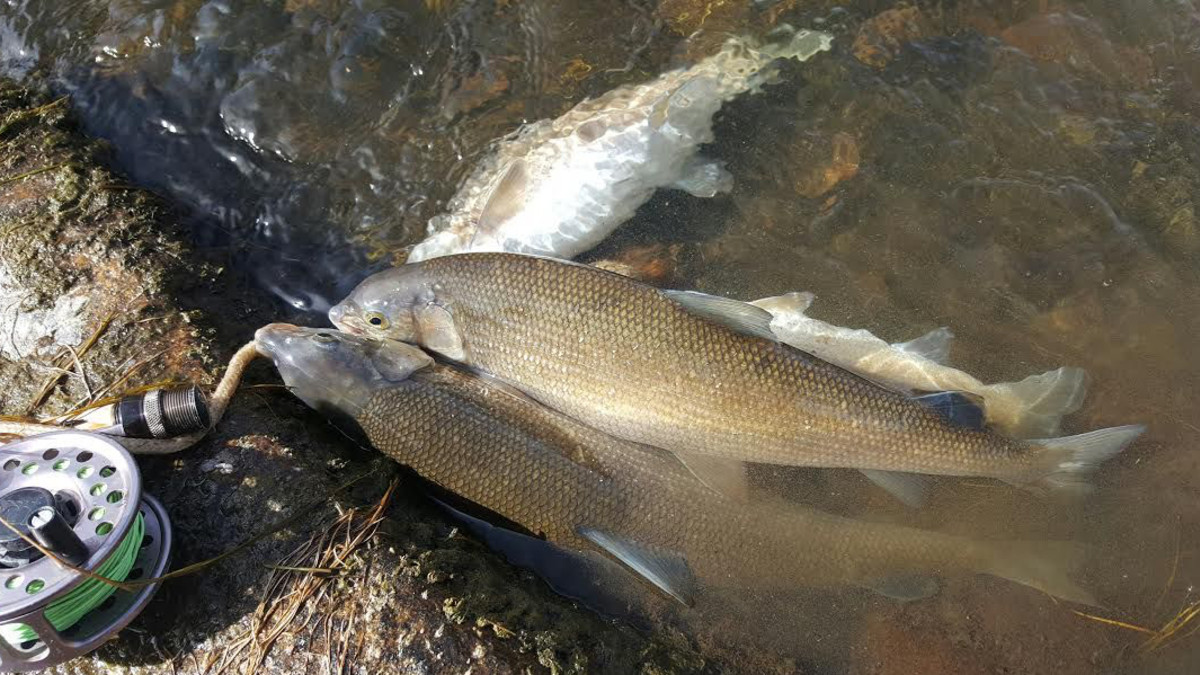
The Mountain Whitefish is an important fish native to many river drainages in the western United States. They are a key indicator species that signify clean, cold, pollution-free water. Whitefish are Salmonids related to trout, salmon and grayling. Despite this, in the Rocky Mountains, the mountain whitefish consistently takes a back seat to more popular, non-native fish like rainbow and brown trout.
Many anglers disdain their plain looks and bottom-feeding nature. Some anglers, who believe less whitefish will result in more trout, leave “whities” to rot on the bank. I even knew a guide, with a woefully poor understanding of whitefish, who belligerently stabbed them in the belly before throwing them back in the river. This is not only a misguided approach to fisheries management, but it’s also a criminal waste of a tasty game fish that offers some overlooked angling opportunities.
Targeting Tactics
Winter is a great time to fish for whities. They feed actively during the cold months on small aquatic insects. In rivers that have open water in the winter, look for whitefish in deep, slow holes during the warmest part of the day. Where you catch one whitefish you’ll likely find many more. Unlike trout, whitefish gather in large schools. They fight hard and can be a challenge to land due to their small, soft mouth.
Fly fishermen should use small beadhead nymphs like a Prince Nymph or Copper John. Tiny, flashy midge patterns work well also. You’ll need to get your flies deep where whitefish feed along the river bottom. Use enough split shot weights to sink your flies quickly and drift them at the same speed as the current. A strike indicator like a Thingamabobber will help detect subtle takes.
Spin fishermen can also effectively target mountain whitefish in the winter. Use an ultralight rod and line and just enough weight to drift small mealworms, maggots or garden worms near the bottom. Salmon eggs are another good bait choice. While your bait is drifting, keep the line between the fingers and thumb of your non-rod hand to feel for whitefish softly eating the bait.
Steve likes to combine bait and fly fishing techniques to stack up the whitefish. His “Dirty Pool” method involves tipping a fly with a small waxworm which really ups your catch rate. Anything goes when the goal is a heavy stringer.
Where to Find Whities
There is good fishing for whitefish throughout the West. Colorado grows huge whities and the world record was landed on the Roaring Fork River. Also try the Colorado, Yampa or White River. In Wyoming, the Snake River drainage is loaded with whitefish. Montana’s Madison and Yellowstone Rivers are whitefish factories. State fish and game agencies will be happy to help you find whitefish rivers in other areas.
Mountain Whitefish limits are generally very liberal, making it easy to fill the freezer. It is unusual more anglers don’t target them. Some ice fishermen in the upper Midwest pursue large Lake Whitefish, a close cousin of the Mountain Whitefish. There was once a thriving commercial fishery for Lake Whitefish in the Great Lakes and there is still a strong market for them in some areas.
The Meat
Whitefish have light, mild-tasting flesh similar to trout but they are very bony. For this reason, many anglers don’t bother with them, which is a mistake. While boneless fillets aren’t a reasonable possibility, there are plenty of other options when it comes to eating whitefish.
Smoking whitefish is one of the easiest ways to ensure a flaking “fall off the bone” meat. Once you have smoked the whitefish it is then your choice on what you would like to make with the delicious meat.
I prefer to make Smoked Whitefish Dip. Just mix some smoked whitefish with cream cheese, chopped chives, and a squeeze of lemon juice and serve over crackers. It’s a great party appetizer that can be made well ahead of time.





